INSTRUCTIONS TO CANDIDATES
- This paper consists of two sections: Section A and section B.
- Answer ALL questions in section A in the spaces provided.
- In section B answer question 6 (compulsory) and either question 7 or 8 in the spaces provided after question 8
For Examiners use only.
|
Section |
Question |
Maximum score |
Candidates score |
|
A |
1 |
8 |
|
|
2 |
8 |
||
|
3 |
8 |
||
|
4 |
8 |
||
|
5 |
8 |
||
|
B |
6 |
20 |
|
|
7 |
20 |
||
|
8 |
20 |
||
|
Total score |
80 |

QUESTIONS
SECTION A (40MARKS)
Answer all questions in this section in the spaces provided
-
- What is meant by linked genes? (1mk)
- Njoki is an albino.Her husband Mwenda has normal skin colour.Two of their children have normal skin colour while the other two are albinos.If albinism is a sex linked trait;
- Give the genotype of
- Njoki (1mk)
- Mwenda (1mk)
- Illustrate the cross between the two parents (4mks)
- Give genotypic ratio of the offsprings (1mk)
- Give the genotype of
- The diagram below shows structures of the bat wing and human arm
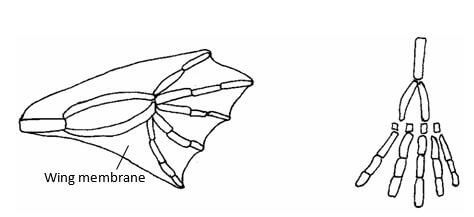
- These structures are thought to have same ancestral origin. State one structural similarity and one adaptational difference between the two.
- Structural similarity. (1 mark)
- Adaptation difference. (2 marks)
- Give two other examples of structures in nature that show the type of evolution as in (a) above. (2 marks)
- Distinguish between the terms ‘chemical evolution’ and ‘organic evolution’. (2 marks)
- What is the study of fossils called? (1 mark)
- These structures are thought to have same ancestral origin. State one structural similarity and one adaptational difference between the two.
- The diagram below represents some gaseous exchange structures in humans.
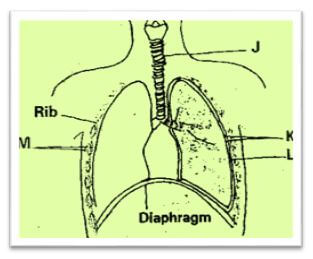
- Name the structure labeled K, L and M (3mks)
K...................................
L....................................
M................................... - How is the structure labeled J suited to its functions? (3mks)
- Name the process by which inhaled air moves from the structure labeled L into blood capillaries. (1mk)
- Give the scientific name of the organism that causes tuberculosis in humans. (1mk)
- Name the structure labeled K, L and M (3mks)
-
-
- The action of ptyalin stops at the stomach. Explain. (1mk)
- State a factor that denatures enzymes. (1mk)
- Name the features that increase the surface area of small intestines. (1mk)
- The graph below shows the effect of substrate concentration on the rate of enzyme reaction.
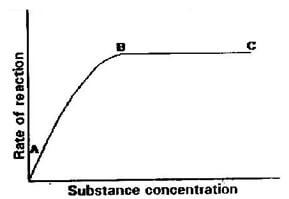
- Account for the shape of the graph between A and B (2mks)
- How can the rate of reaction be increased after point B? (1mk)
- State two factors that affect the rate of enzyme reaction. (2mks)
-
-
- Laboratory analysis of a patient’s urine revealed the following concentration of various substances:
Blood proteins 0.00%
Water 50%
Glucose 48%
Salts 0.8%
Urea 1.2%- From the analysis above, which disease is the patient suffering from (1mk)
- Explain the cause of the disease in 3(a) above (2mks)
- Which organ in the person may not be functioning properly? (1mk)
- Explain the effects of the following on the quantity and composition of urine
- Drinking large amount of clean water (2mks)
- Drinking very salty soup (2mks)
SECTION B (40 Marks)
Answer questions 6 (compulsory) and either questions 7 or 8
- Laboratory analysis of a patient’s urine revealed the following concentration of various substances:
- The following data are results of making daily growth measurement ion an organism over a period of 24 days during its development.
Day
Width of head (mm)
Length of hind femur (mm)
1.
2.
3.
4.
5.
6.
7.
8.
9.
10.
11.
12.
13.
14.
15.
16.
17.
18.
19.
20.
21.
22.
23.
24.
3.0
3.5
4.0
4.0
4.0
4.0
4.0
4.4
4.7
5.0
5.0
5.0
5.0
5.0
5.0
5.0
5.7
6.4
7.0
7.6
7.6
7.6
7.6
7.6
7.0
7.5
8.0
8.0
8.0
9.2
10.5
12.0
12.0
12.0
12.0
12.0
12.0
12.0
13.3
14.8
16.4
18.0
18.0
18.0
18.0
18.0
18.0
18.0
- Using a suitable scale draw graphs of width of head and length of femur against time. Draw the graphs on the same axis. ( 8 marks)
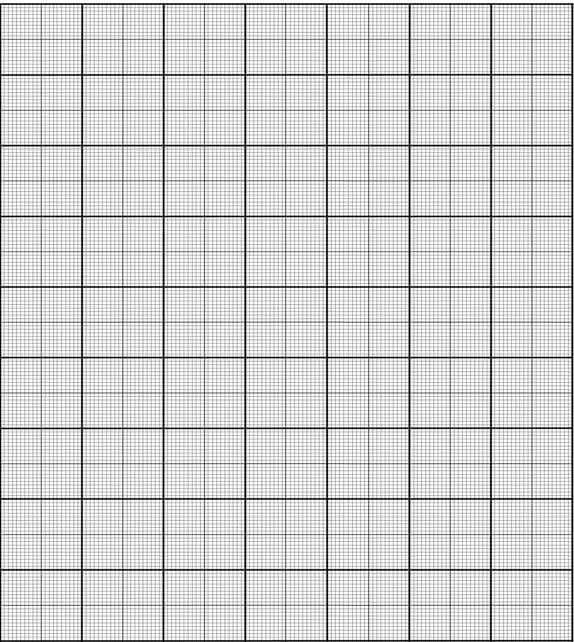
-
- Name the growth pattern represented by the graph ( 1 mark)
- With reference to your graph identify the phylum to which the organisms belong. Give a reason for your answer ( 2 marks)
- Account for the length of hind femur between
- Day 3 and day 7 ( 3 marks)
- Day 7 and day 10 ( 2 marks)
- State two hormones involved in the growth pattern represented by the graphs ( 2 marks)
- State two advantages of metamorphosis in organisms ( 2 marks)
- Using a suitable scale draw graphs of width of head and length of femur against time. Draw the graphs on the same axis. ( 8 marks)
-
- Describe how the mammalian small intestine is adapted to its function. (12mks)
- For each of the following nutrients give one example of its role in the body and the deficiency disease it may cause ? (8mks)
Nutrient
Role in the body
Deficiency disorder it causes
Vitamin A
Iron
Iodine
Vitamin D
-
- Describe the process of fertilization in flowering plant. (15mks)
- State the changes that take place in a flower after fertilization. (5mks)

MARKING SCHEME
SECTION A (40MARKS)
Answer all questions in this section in the spaces provided
-
- What is meant by linked genes? (1mk)
Linked genes are those genes that are found in the same chromosomes and they are usually inherited together.
- Njoki is an albino.Her husband Mwenda has normal skin colour.Two of their children have normal skin colour while the other two are albinos.If albinism is a sex linked trait;
- Give the genotype of
- Njoki (1mk)

- Mwenda (1mk)

- Njoki (1mk)
- Illustrate the cross between the two parents (4mks)
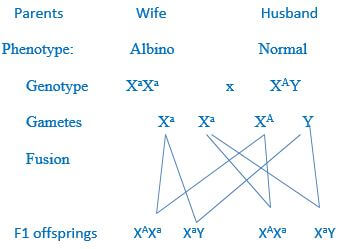
- Give genotypic ratio of the offsprings (1mk)

- Give the genotype of
- What is meant by linked genes? (1mk)
- The diagram below shows structures of the bat wing and human arm

- These structures are thought to have same ancestral origin. State one structural similarity and one adaptational difference between the two.
- Structural similarity. (1 mark)
Both show the pentadactyl limb structure - Adaptation difference. (2 marks)
-Human arm has five digits separated into four fingers and an opposable thump for grasping;
-The bat wing has five digits which are long and spread apart to support a large membranous wing for flight;
- Structural similarity. (1 mark)
- Give two other examples of structures in nature that show the type of evolution as in (a) above. (2 marks)
- Distinguish between the terms ‘chemical evolution’ and ‘organic evolution’. (2 marks)
Chemical evolution explains the origin of life as having occurred when simple chemical compounds reacted to form the simplest life forms; organic evolution is the progressive development of complex organisms from simple pre-existing life forms over a long period of time; - What is the study of fossils called? (1 mark)
Palaeontology;
- These structures are thought to have same ancestral origin. State one structural similarity and one adaptational difference between the two.
- The diagram below represents some gaseous exchange structures in humans.

- Name the structure labeled K, L and M (3mks)
K…pleural memranes
J Trachea
M…intercostal muscles - How is the structure labeled J suited to its functions? (3mks)
-The walls of the trachea and bronchi are lined by rings of cartilage; which prevent them from collapsing and keep them open for air passage;
- The inner passage of air ways is lined with mucous membrane; which contain ciliated cell whose movements to and from the pharynx cause a sweeping action that collects mucuscontaining dust towards the pharynx hence preventing their entry into the air ways;
- The mucous membrane contains mucus secreting cells; which produce mucus that trap dust and pathogenic particles which would find their ways into the air ways;
- The mucous membrane has a rich supply of blood; which helps to keep the incoming air warm and moist for easy diffusion into the lungs; - Name the process by which inhaled air moves from the structure labeled L into blood capillaries. (1mk)
Ventilation - Give the scientific name of the organism that causes tuberculosis in humans. (1mk)
Tuberculosis pneumoniae
- Name the structure labeled K, L and M (3mks)
-
-
- The action of ptyalin stops at the stomach. Explain. (1mk)
HCL in stomach stops ptyalin activity since ptyalin requires slightly alkaline Ph - State a factor that denatures enzymes. (1mk)
High temperature ,Extreme ph - Name the features that increase the surface area of small intestines. (1mk)
Coiling , Villi and micro villi , Long
- The action of ptyalin stops at the stomach. Explain. (1mk)
- The graph below shows the effect of substrate concentration on the rate of enzyme reaction.

- Account for the shape of the graph between A and B (2mks)
-more active sites of enzymes available for a large number of molecules of substrate. There is increase in rates of reaction - How can the rate of reaction be increased after point B? (1mk)
Raising concentration of enzymes - State two factors that affect the rate of enzyme reaction. (2mks)
-Temperature
-PH
-presence and bsence of inhibitors.
- Presence of co-factors or co-enzymes.
- Enzymes and substrate concentration
- Account for the shape of the graph between A and B (2mks)
-
-
- Laboratory analysis of a patient’s urine revealed the following concentration of various substances:
Blood proteins 0.00%
Water 50%
Glucose 48%
Salts 0.8%
Urea 1.2%- From the analysis above, which disease is the patient suffering from (1mk)
Diabetis - Explain the cause of the disease in 3(a) above (2mks)
Caused by lack of enough insulin leading to high glucose concentration in the blood than normal - Which organ in the person may not be functioning properly? (1mk)
Pancreas
- From the analysis above, which disease is the patient suffering from (1mk)
- Explain the effects of the following on the quantity and composition of urine
- Drinking large amount of clean water (2mks)
Less ADH is secreted.
Nephron tubules becomes less permeable to water.
More water is lost in form of urine - Drinking very salty soup (2mks)
Osmotic pressure increases in the blood.
Less Aldosterone is secreted
Salts are not reabsorbed hence are lost via urine
SECTION B (40 Marks)
Answer questions 6 (compulsory) and either questions 7 or 8
- Drinking large amount of clean water (2mks)
- Laboratory analysis of a patient’s urine revealed the following concentration of various substances:
- The following data are results of making daily growth measurement ion an organism over a period of 24 days during its development.
Day
Width of head (mm)
Length of hind femur (mm)
1.
2.
3.
4.
5.
6.
7.
8.
9.
10.
11.
12.
13.
14.
15.
16.
17.
18.
19.
20.
21.
22.
23.
24.
3.0
3.5
4.0
4.0
4.0
4.0
4.0
4.4
4.7
5.0
5.0
5.0
5.0
5.0
5.0
5.0
5.7
6.4
7.0
7.6
7.6
7.6
7.6
7.6
7.0
7.5
8.0
8.0
8.0
9.2
10.5
12.0
12.0
12.0
12.0
12.0
12.0
12.0
13.3
14.8
16.4
18.0
18.0
18.0
18.0
18.0
18.0
18.0
- Using a suitable scale draw graphs of width of head and length of femur against time. Draw the graphs on the same axis. ( 8 marks)
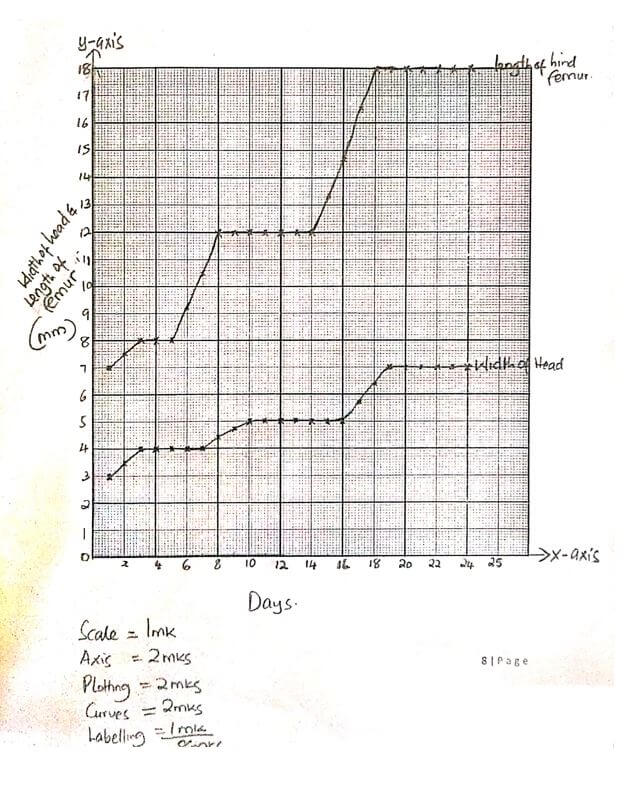
-
- Name the growth pattern represented by the graph ( 1 mark)
Intermittent growth/ discontinuous growth - With reference to your graph identify the phylum to which the organisms belong. Give a reason for your answer ( 2 marks)
Phylum Arthropoda
Reason: Shows continuous growth/ intermittent growth.
- Name the growth pattern represented by the graph ( 1 mark)
- Account for the length of hind femur between
- Day 3 and day 7 ( 3 marks)
Length of femur remains constant/ no change in length; growth has not taken place because of the presence of rigid exoskeleton/ cuticle which limits expansion of tissues. - Day 7 and day 10 ( 2 marks)
Length of femur increased because moulting/ ecdysis/ shedding of exoskeleton has occurred allowing growth/ expansion of tissues.
- Day 3 and day 7 ( 3 marks)
- State two hormones involved in the growth pattern represented by the graphs ( 2 marks)
Juvenile hormone
- Moulting/ ecdysone hormone. - State two advantages of metamorphosis in organisms ( 2 marks)
Reduce competition between the young ones (larvae) ;
Avoid predation of the young ones as they are different ;
The pupa stage can withstand harsh environment by being inactive;
- Using a suitable scale draw graphs of width of head and length of femur against time. Draw the graphs on the same axis. ( 8 marks)
-
- Describe how the mammalian small intestine is adapted to its function. (12mks)
Intestines relatively long/coiled /folded ;this allows food enough time for absorption.
Intestines have villi/microvilli; to increase the surface area for absorption and digestion
Intestinal walls have glands which secrete enzymes for digestion;(examples of correct enzymes e.g. Maltose, sucrose lactose etc).
Some glands /goblet cells also produce mucus; which protects the intestinal wall from autodigestion/being digested; and reduce friction;
Intestines have opening of ducts which allows bile pancreatic juice into the lumen;
The intestines have circular and longitudinal muscle, whose contraction and relaxation/peristalsis;Leads to mixing of food with enzymes/juice; facilitating rapid digestion and help push food along the gut;
The intestines are well supplied with blood vessels to supply oxygen/ remove digested food from an efficient absorption and transporting system to move the food away from the small intestines;
Have lacteal vessels for transport of fat/lipid; have thin epithelial lining; to facilitating fast absorption /diffusion; - For each of the following nutrients give one example of its role in the body and the deficiency disease it may cause ? (8mks)
Nutrient
Role in the body
Deficiency disorder it causes
Vitamin A
Synthesis of rhodopsin (for proper function of retinal
Night blindness/Poor vision
Iron
Manufacture of hemoglobin
Anaemia
Iodine
Manufacture thyroxin
Goitre
Vitamin D
Aids assimilation of calcium phosphate for making teeth and bones.
Rickets
- Describe how the mammalian small intestine is adapted to its function. (12mks)
-
- Describe the process of fertilization in flowering plant. (15mks)
After pollination, the pollen grain absorbs nutrients from the stigma; and develops a pollen tube; it grows down the style to the embryosac; taking along the male nuclei; the tube nuclei initiates and maintains pollen tube growth; while the generative nucleus divides by mitosis; to form two male gamete nuclei; which follow behind the tube nucleus as the pollen tube grows down the style; pollen tube enters the ovule through the micropyle; its tip bursts open; while the tube nucleus disintegrates; one of the male gamete nucleus fuses with the egg cell nucleus/oosphere/megaspore; to form the zygote; while the other fuses with the two polar nuclei; to form a triploid nucleus; called the primary endosperm nucleus;. - State the changes that take place in a flower after fertilization. (5mks)
After fertilization, the zygote undergoes repeated mitotic divisions; to form an embryo consisting of the plumule, radicle and seed leaves/cotyledons;
primary endosperm nucleus divide repeatedly, become separated by membranes; to form an (semi-fluid nutritive) endosperm;
ovary walls change into the pericarp;
ovary changes/develops into a fruit
; while ovules lose water and become seeds
; the integuments; change into seed coats/testa;
tyle/filaments/petals/sepals wither and fall off (or may persist);
- Describe the process of fertilization in flowering plant. (15mks)
Download Biology Paper 2 Questions and Answers - Form 4 Term 2 Opener Exams 2022.
Tap Here to Download for 50/-
Get on WhatsApp for 50/-
Why download?
- ✔ To read offline at any time.
- ✔ To Print at your convenience
- ✔ Share Easily with Friends / Students

